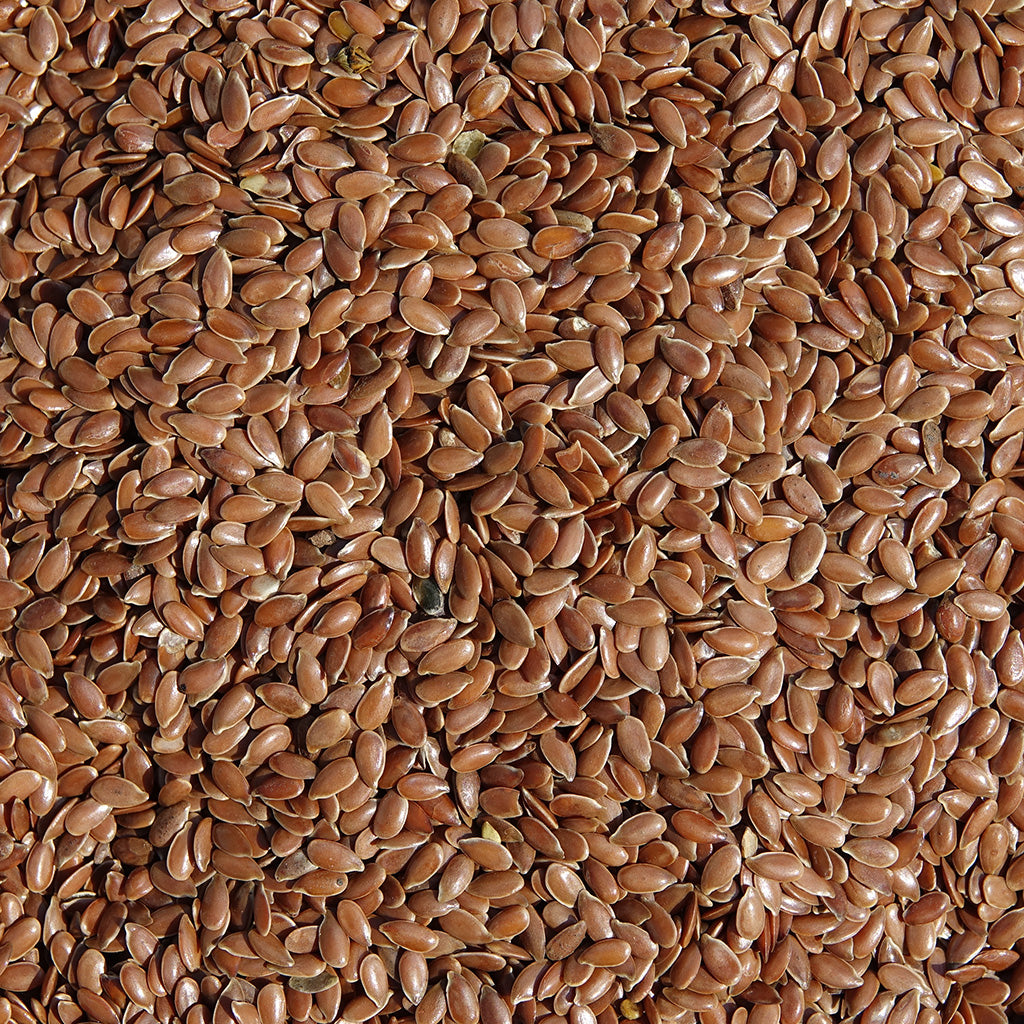ORGANIC FLAX SEEDS
Have a question?

ORGANIC FLAX SEEDS
Dettagli
Origin and diffusion
Flax (Linum usitatissimum L.) likely originated in the area between the Persian Gulf, the Caspian Sea, and the Black Sea; it appears to have been brought to Northern Europe by the Finns and by the Indo-Europeans to the rest of Europe. Its cultivation dates back at least five thousand years in both Europe and Egypt. In the Middle Ages, flax was widely cultivated throughout the European continent, and its decline began only in the eighteenth century, due primarily to the increased cultivation of other fiber plants; the decline was accentuated during the twentieth century with the advent of synthetic fibers.
Globally, the largest producer of flaxseed is Canada, followed at a distance by Argentina, India, China, and New Zealand. In Europe, it is grown in France, Great Britain, and Belgium. Flax fiber cultivation is widespread in some former Soviet Union states and China; in Europe, in Romania, Poland, France, the Netherlands, and Belgium. In Italy, in 1990, only a few hundred hectares were used for seed and fiber production.
Flax belongs to the Linaceae family, Linum genus, which includes approximately 200 species, including L. usitatissimum L., the only species cultivated for industrial purposes; the other species are of modest interest, with the exception of some used for ornamental purposes.
The species Linum usitatissimum L. includes numerous forms and the cultivated types are divided into two large groups:
- Fiber flax: includes tall forms, elastic stems, long, ductile fibers, small inflorescences, small blue or sometimes white flowers, and small, brown seeds; these forms prefer cool, coastal environments without significant temperature variations;
- Oil flax: includes small-sized forms, with a rigid habit, with short, robust stems, branched at the base, with short, coarse fibres, very developed inflorescences, blue and sometimes purple flowers, with larger, brown or reddish seeds; they prefer warm, sunny environments.
Botanical characters
Flax is a herbaceous plant with a thin, sparsely branched taproot, and an erect stem (single or branched in seed-bearing varieties), rarely exceeding one meter in height. The leaves are sessile or briefly petiolate, entire, narrow, glabrous, alternate, and rarely opposite. The flowers, solitary or clustered in corymbs, consist of five sepals and five petals, usually blue, sometimes white or purplish. The fruit is a five-carpellated capsule, each carpel bilocular; each cell contains a single seed, varying in color (brown, reddish-brown, olive-brown), shiny, rich in oil, and poor in sapwood, elongated, and oval. The outermost layer of the integument is made up of polygonal cells that swell in water.
Environmental needs
The northern types, from temperate-humid areas, are grown for fiber production; those from warm climates are intended for seed production.
Flax prefers deep, fertile, fairly light soils with a good organic matter content and a neutral pH; in soils too rich in humus, the abundance of nitrogen promotes lodging.
The life cycle lasts 90-100 days for spring-sown varieties and 180-200 days or more for fall-sown varieties. Given the short life cycle (in spring-sown varieties), nutrients must be available in easily assimilated forms. In flax, nitrogen is of considerable importance as it determines yield and promotes stem elongation and the formation of bast bundles. Phosphorus influences the quantity and quality of production, particularly that of the seed, and gives the plant greater hardiness and resistance to adversity. Potassium helps increase the fineness of the fiber, imparting uniformity and elasticity.
Cultivation technique
Flax can take first place in a crop rotation; it's best not to let flax succeed itself to avoid soil fatigue. Fiber flax leads the rotation by succeeding a meadow, alfalfa, or a winter cereal, while seed flax follows a renewal crop.
After deep plowing (about 40 cm), two tillage operations are required to prepare a very fine soil. Sowing takes place from mid-February to late April for spring varieties, and from October to December for autumn varieties, in rows about 10 cm apart (140-180 kg/ha of seed for fiber production and 80-90 kg/ha for flax seed).
The nutrient requirement is approximately 80-100 kg/ha of nitrogen, 80 kg/ha of phosphorus and the same amount of potassium.
In the North, the crop usually does not require irrigation; in the South, it requires 2-3 irrigation interventions.
In the early stages of the cycle it is sensitive to weeds.
Collection and use
Seed flax is harvested when the pods have turned brown; for fiber flax, the optimal time coincides with the loss of the basal leaves from the stem and its color changing from deep green to deep straw yellow. For fiber production, harvesting is done using mechanical weeders, while for oil production, it is done with standard combine harvesters.
Yields vary depending on the type of crop: for fiber crops, 40 to 60 quintals of dried straw per hectare, of which 5 to 7 quintals are seed; for oil crops, the seed yield can reach 20 to 25 quintals/ha.
Commercial fiber is derived from the bast fibers of the bark (30-90 cm long), obtained through a processing that includes maceration, drying, malaxation, and curdling. Byproducts of this processing include lint and tow.
Flaxseed contains approximately 35-45% oil and 5-6% mucilage; it is used exclusively for the production of paints, varnishes, printing ink, and linoleum. The remaining cake (such as spent capsules) is used in animal feed.
Adversities and parasites
Damage can be caused by cold snaps and excessive heat; hail can cause stem lacerations; strong winds and heavy rains can cause lodging.
Among the mycoses we remember: Rust (Melampsona lini), Blast or Svettamento (Fusicladium lini and Asterocystis lini) and Antractone (Colletotrichum lini).
Among insects, damage can be caused by flea beetles (Aphthona euphorbiae and Longitarsus parvulus), thrips (Thrips lini and Thrips linarius), moths (Conchilis epilinana) and noctuid lepidopterans (Lycophotia saucia, Phytometra gamma) and nymphalids (Vanessa cardui).
The nematode Heterodera radicicola causes the formation of galls on the roots.


